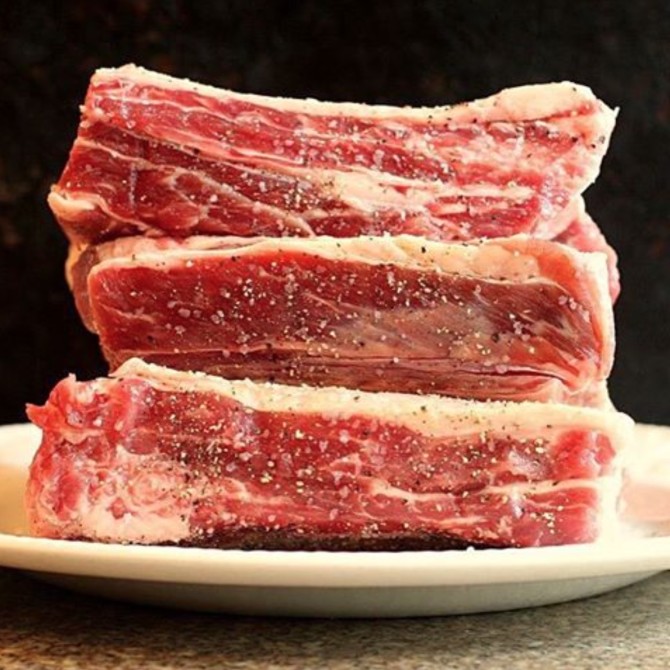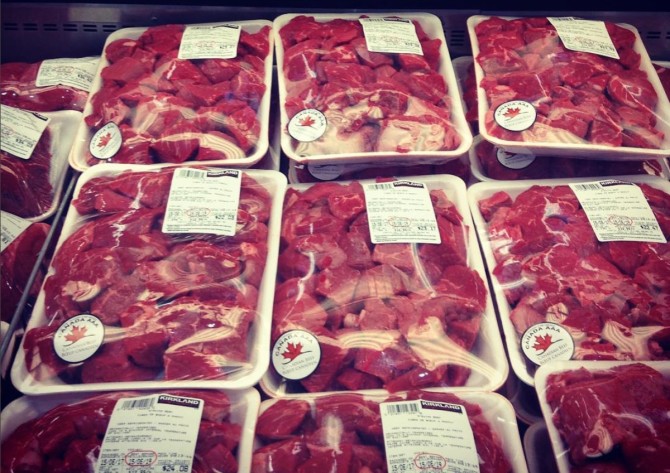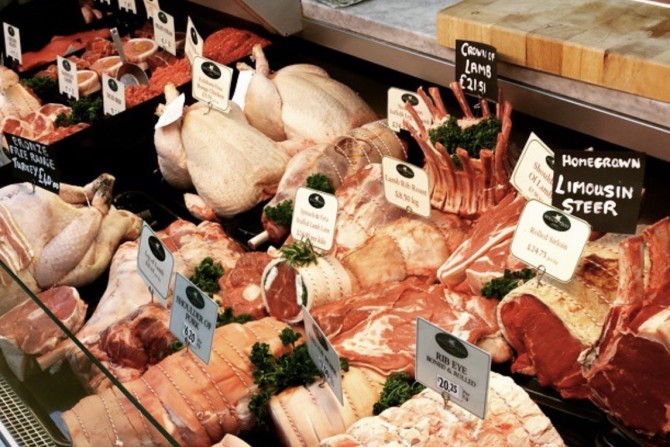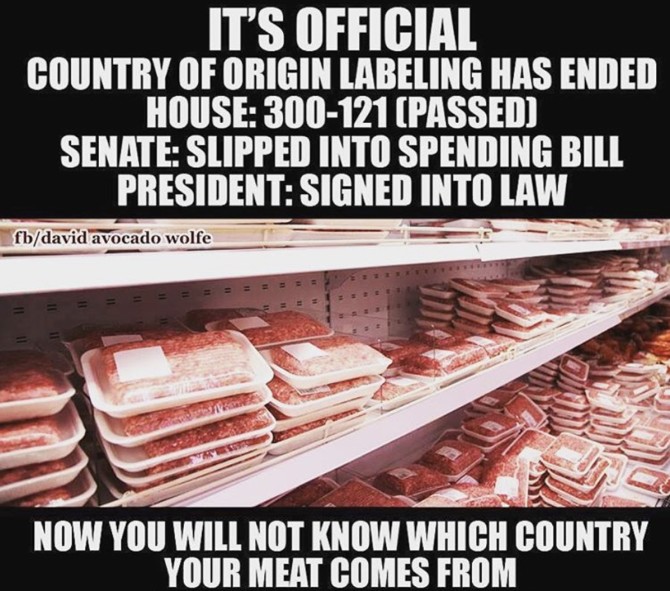Food sourcing has been a hot topic recently. People are getting more concerned with where their food comes from, especially meat. Popular food documentaries such as Food Inc. and Cowspiracy have swept the nation. This has brought on a push from the public for transparency in the food system. One of the ways that food companies achieve this is through labeling, but maybe not for long.
Country of Origin Labeling (COOL) in the United States for pork and beef has just been repealed. The bill was signed by Congress and Obama this past December. This comes after facing $1 billion in import taxes imposed by the WTO (World Trade Organization). What does this mean for consumers? Mystery meat may no longer be something only found in a 1980’s school cafeteria.
Why was COOL initiated?

Photo courtesy of @thebutchersp on Instagram
COOL was introduced by Congress in the 2002 Farm Bill, and implemented in the 2008 Farm Bill. This required the country of origin to be on meat packaging to enhance consumer knowledge. Consumers would know where the animal was born, raised and slaughtered. This significantly increased transparency between meat companies and consumers. COOL was in full effect from 2013 until its repeal this past December.
Why was there opposition?

Photo courtesy of @leandatron on Instagram
Mexico and Canada were big opponents of COOL. They claim that COOL has cost them $3 billion in damages due to less sales. Many also believe that the tracking and labeling required under COOL is extremely costly, and the burden is too much on meat companies.
Requiring country of origin labeling was found to lead to discrimination against imported meats. It then gives an advantage to domestic companies. The WTO determined that COOL was a non-tariff trade barrier. This violates the contract the United States signed with the WTO.
Regardless of COOL, the law has always been that labeling is required if a product goes directly from an international country to a store. It is only if it is processed in the United States before being put on the shelf that it does not have COOL. These products are marked as being processed in the US. The country of origin is not labeled, but companies are allowed to give further information if they want to. The current system was deemed to be enough transparency. There is also nothing stopping consumers from seeking this information on their own.
Who supports COOL?

Photo courtesy of @anthonygellard on Instagram
A study in 2013 showed that 90 percent of Americans were in favor of COOL. It provided transparency and allowed consumers to make informed decisions about the food they were eating. If consumers know a country has had a recent outbreak of, let’s say, Mad Cow Disease (they really need a new name) COOL allows them to make an informed decision about their purchase. Many feel that repealing COOL is like removing a food label from a product. If it is not labeled, the choice is taken away from the consumer all together.
COOL supports higher standards of food safety and sustainability, which is being demanded for by American consumers. It allows consumers who want to buy products made in America to do so. There are many who prefer to support for domestic farmers and COOL made it so much easier to do so.
What does this mean for consumers who want transparency?

Photo courtesy of @stephanielocricchio on Instagram
According to the Agriculture Secretary, the USDA will continue to subject all imported and domestic met to rigorous food safety inspections. (what rigorous means in this context, no one knows). If that doesn’t give you much peace of mind, maybe this will:
For now, it may seem as though the opponents of COOL have won. Don’t get too worried or start protesting yet. Supporters of COOL say that they are trying to work towards a reinstating of COOL in 2016, so we’re keeping our fingers crossed.


